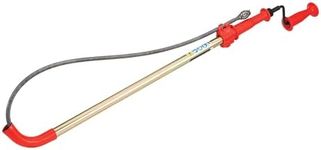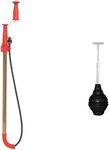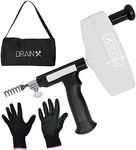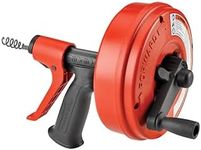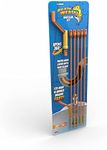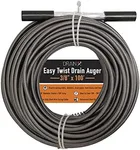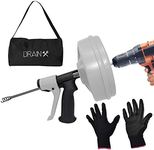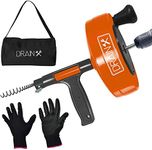Buying Guide for the Best Auger Toilet
Choosing the right auger for your toilet can make a significant difference in how effectively you can clear clogs and maintain your plumbing. An auger, also known as a plumbing snake, is a tool designed to navigate through the twists and turns of your toilet's plumbing to remove blockages. When selecting an auger, it's important to consider several key specifications to ensure you get the best fit for your needs. Understanding these specs will help you make an informed decision and keep your toilet functioning smoothly.LengthThe length of the auger is crucial because it determines how far the tool can reach into the plumbing to clear blockages. Augers typically range from 3 feet to 6 feet in length. A shorter auger (around 3 feet) is usually sufficient for most household toilets and is easier to handle. However, if you have a more complex plumbing system or frequent deep clogs, a longer auger (up to 6 feet) might be necessary. Choose the length based on the typical depth of clogs you encounter and the complexity of your plumbing system.
Cable MaterialThe material of the auger's cable affects its durability and flexibility. Common materials include steel and coated steel. Steel cables are strong and durable, making them suitable for tough clogs and frequent use. Coated steel cables have an additional layer that can protect your toilet's porcelain from scratches and provide extra flexibility. If you are concerned about potential damage to your toilet or need a more flexible tool, opt for a coated steel cable. For heavy-duty use, a plain steel cable might be more appropriate.
Handle TypeThe handle type of the auger can impact how easy it is to use. There are two main types: T-handles and crank handles. T-handles are simple and provide a good grip, making them easy to maneuver in tight spaces. Crank handles offer more leverage and can make it easier to push the cable through tough clogs. If you prefer a straightforward tool and have relatively simple clogs, a T-handle might be sufficient. For more stubborn clogs or if you want extra leverage, a crank handle could be more effective.
Auger Head DesignThe design of the auger head determines how well it can break up and remove clogs. Common designs include bulb heads and drop heads. Bulb heads are rounded and can push through clogs without damaging the plumbing. Drop heads are more flexible and can navigate through bends and curves more easily. If your toilet has a lot of bends or you frequently deal with clogs in tricky spots, a drop head might be more suitable. For general use and straightforward clogs, a bulb head is often effective.
Ease of UseEase of use encompasses several factors, including the weight of the auger, the comfort of the handle, and how easily the cable can be fed into the toilet. A lighter auger is easier to handle, especially for extended periods. Ergonomic handles can reduce strain on your hands and wrists. Additionally, some augers have features that make it easier to feed and retract the cable, such as auto-feed mechanisms. Consider your physical strength and how often you expect to use the auger when evaluating ease of use. Choose an auger that feels comfortable and manageable for you.
